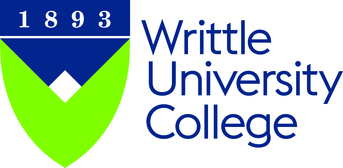Evaluation of the Effects of Synovial Multipotent Cells on Deep Digital Flexor Tendon Repair in a Large Animal Model of Intra-Synovial Tendinopathy.
Khan, Mohammad R, Smith, Roger K, David, Frederic, Lam, Richard, Hughes, Gillian, Ferro de Godoy, Roberta, Carr, Andrew J, Goodship, Allen E and Dudhia, Jayesh (2020) Evaluation of the Effects of Synovial Multipotent Cells on Deep Digital Flexor Tendon Repair in a Large Animal Model of Intra-Synovial Tendinopathy. Journal of orthopaedic research : official publication of the Orthopaedic Research Society, 38 (1). pp. 128-138. ISSN 1554-527X
|
Text
jor.24423.pdf Available under License Creative Commons Attribution. Download (5MB) | Preview |
Abstract
Intra-synovial tendon injuries are a common orthopedic problem with limited treatment options. The synovium is a specialized connective tissue forming the inner encapsulating lining of diarthrodial joints and intra-synovial tendons. It contains multipotent mesenchymal stromal cells that render it a viable source of progenitors for tendon repair. This study evaluated the effects of autologous implantation of cells derived from normal synovium (synovial membrane cells [SMCs]) in augmenting repair in an ovine model of intra-synovial tendon injury. For this purpose, synovial biopsies were taken from the right digital flexor tendon sheath following creation of a defect to the lateral deep digital flexor tendon. Mononuclear cells were isolated by partial enzymatic digestion and assessed for MSC characteristics. Cell tracking and tendon repair were assessed by implanting 5 × 10 cells into the digital flexor tendon sheath under ultrasound guidance with the effects evaluated using magnetic resonance imaging and histopathology. Synovial biopsies yielded an average 4.0 × 10 ± 2.7 × 10 SMCs that exhibited a fibroblastic morphology, variable osteogenic, and adipogenic responses but were ubiquitously strongly chondrogenic. SMCs displayed high expression of CD29 with CD271 and MHC-II cell-surface marker profiles, and variable expression of CD73, CD90, CD105, CD166, and MHC-I. Implanted SMCs demonstrated engraftment within the synovium, though a lack of repair of the tendon lesion over 24 weeks was observed. We conclude healthy synovium is a viable source of multipotent cells, but that the heterogeneity of synovium underlies the variability between different SMC populations, which while capable of engraftment and persistence within the synovium exhibit limited capacity of influencing tendon repair. © 2019 The Authors. Journal of Orthopaedic Research published by Wiley Periodicals, Inc. on behalf of Orthopaedic Research Society J Orthop Res 38:128-138, 2020.
| Item Type: | Article |
|---|---|
| Divisions: | Equine & Veterinary Physiotherapy |
| Depositing User: | Dr Roberta Blake |
| Date Deposited: | 23 Jul 2023 08:41 |
| Last Modified: | 10 Nov 2023 11:49 |
| URI: | https://writtle.repository.guildhe.ac.uk/id/eprint/15190 |
Actions (login required)
 |
Edit Item |

